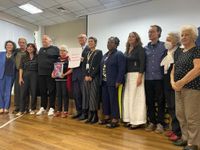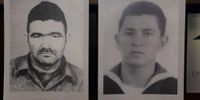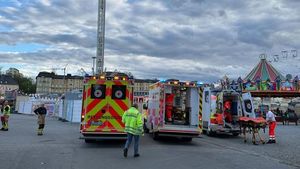On April 16, 2025, a significant milestone was reached in Brazil's ongoing quest for justice and remembrance as the Special Commission on Political Deaths and Disappearances (CEMDP) announced the identification of the remains of two political dissidents, Grenaldo de Jesus Silva and Denis Casemiro. Both men were victims of state violence during Brazil's military dictatorship, buried clandestinely in the Vala de Perus, located in the Dom Bosco Cemetery in São Paulo.
This announcement was made during a public ceremony held at the Federal University of São Paulo (Unifesp), marking a moment of deep emotion and progress in the fight for memory, truth, and justice in Brazil. "The struggle for memory, truth, and justice is not just about the past. It is about the present and the future of Brazil. When we identify the remains of people silenced by the dictatorship, we are affirming that democracy must be built on the basis of human dignity," stated Macaé Evaristo, Brazil's Minister of Human Rights and Citizenship.
Both Silva and Casemiro were arrested by military forces, tortured, and ultimately murdered. Silva, a member of the Brazilian Navy, was born in São Luís, Maranhão, and was expelled from the Navy in 1964 for advocating better working conditions. After being imprisoned, he managed to escape but was killed on May 30, 1972, while attempting to hijack a plane at São Paulo's Congonhas Airport. His remains were buried undocumented at the Dom Bosco Cemetery on June 1, 1972, and he was listed as missing until his identification by the Perus Project team.
Denis Casemiro, born in Votuporanga, São Paulo, was a bricklayer, farm worker, and political activist in the Popular Revolutionary Vanguard (VPR). He was arrested in April 1971, tortured, and executed by agents from the Department of Political and Social Order, led by police chief Sérgio Fleury. At the time of his death, authorities falsely claimed he had attempted to escape. Interestingly, Casemiro had been incorrectly identified in 1991, but recent genetic testing confirmed his true identity.
The Perus Project, which aims to identify the skeletal remains found in the Perus ditch, is a collaborative effort involving the Ministry of Human Rights and Citizenship, São Paulo's city hall, CEMDP, and Unifesp, particularly through the Center for Anthropology and Forensic Archaeology (CAAF). The project has faced challenges, as only five of the 42 individuals believed to have been murdered during the dictatorship and buried in the Perus ditch have been identified to date.
The discovery of the Perus pit in 1990 was a watershed moment, revealing the extent of state violence during the military regime. Journalist Caco Barcellos uncovered the site while probing murders committed by the military police. His investigation led to the excavation of the pit, where approximately 1,049 sets of unidentified bones were found, belonging to victims of state violence, death squads, and even those who died from a meningitis outbreak that the dictatorship sought to conceal.
In a ceremony earlier this year, the federal government publicly apologized for its negligence in the identification and preservation of the remains discovered in the Perus mass grave. Evaristo expressed, "The Ministry of Human Rights and Citizenship, on behalf of the Brazilian state, apologizes to the families of those who disappeared during the Brazilian military dictatorship initiated in 1964, and to Brazilian society for the negligence, from 1990 to 2014, in carrying out the identification work on the bones found in the Perus clandestine grave in the Dom Bosco Cemetery, in São Paulo."
Decades of neglect have plagued the identification process. After the pit was opened, the remains were placed under the care of Fortunato Badan Palhares, head of the Department of Legal Medicine at Unicamp, where they remained for 20 years. This period of inaction led to accusations of negligence from families and the Public Ministry. The CAAF's recent work has seen a resurgence in identification efforts, with the identification of Denis Casemiro serving as a pivotal moment.
Grenaldo de Jesus Silva's story is particularly poignant. Born in 1941, he joined the Apprentice Sailors School of Ceará in 1960 but was expelled for his political activism following the military coup. After escaping from prison, he lived in hiding until his tragic death in 1972. His son, Grenaldo Edmundo da Silva Mesut, learned of his father's true legacy as a political dissident only years later, after reading an article that revealed his father's heroism rather than the criminal narrative presented by the regime.
The identification of Silva and Casemiro is part of a broader struggle for justice in Brazil. Their stories reflect the painful legacy of the military dictatorship, which has left deep scars on Brazilian society. The ongoing efforts to identify the remains of other victims continue, as families seek closure and recognition for their loved ones.
As Brazil grapples with its past, the identification of Silva and Casemiro serves as a reminder of the importance of memory and truth in the pursuit of justice. The fight for recognition and dignity for the victims of state violence remains a priority for many, as they continue to push for accountability and historical reparation.
The legacy of the Vala de Perus and the stories of Grenaldo de Jesus Silva and Denis Casemiro underscore the necessity of acknowledging the past to build a more just and equitable future for Brazil.






